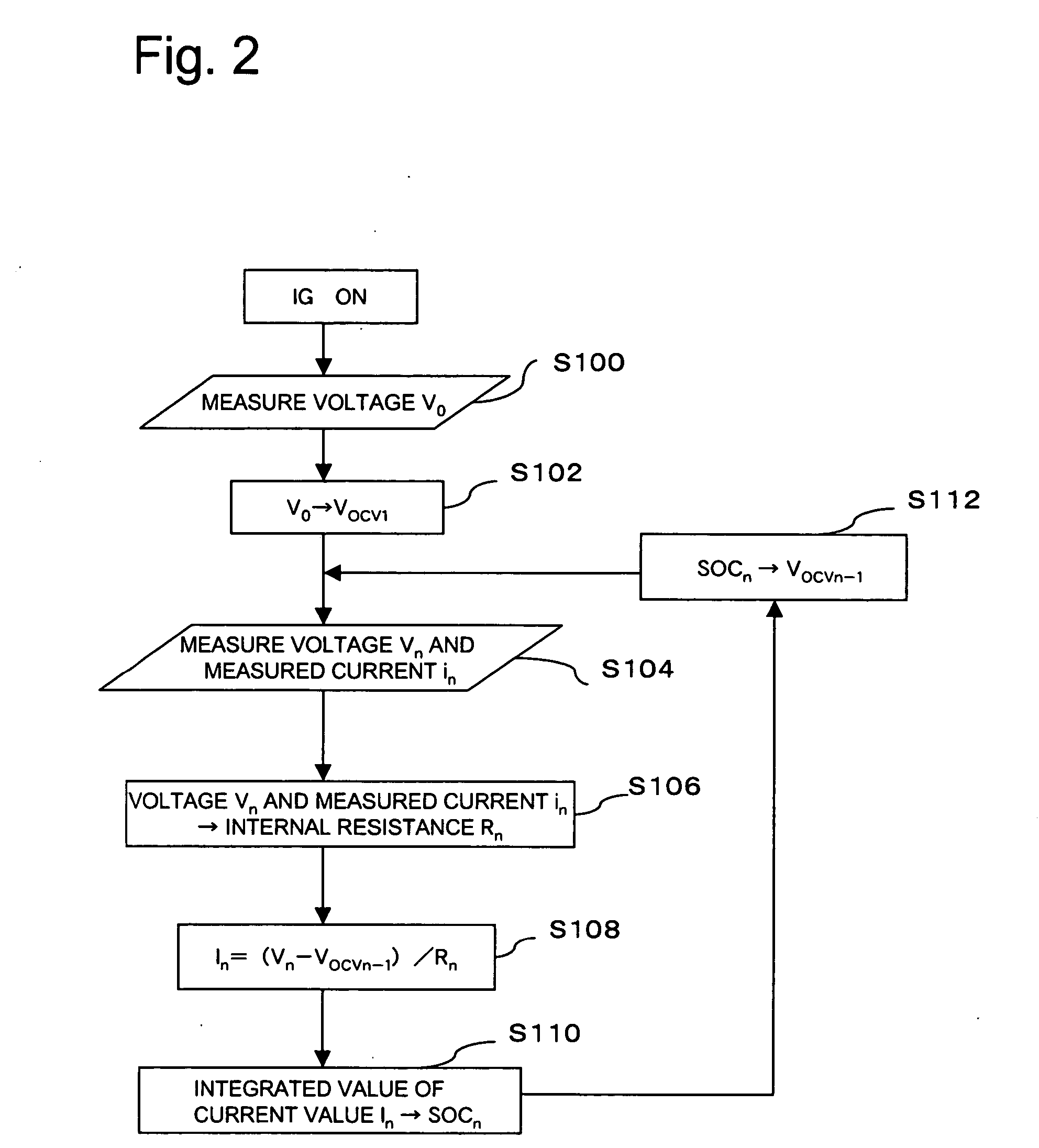Battery state-of-charge estimator
a state-of-charge and battery technology, applied in the field of battery state-of-charge estimator, can solve the problems of low estimation precision of determined soc and reduced estimation precision of soc in soc estimation units, and achieve the effect of improving the accuracy of soc estimation
- Summary
- Abstract
- Description
- Claims
- Application Information
AI Technical Summary
Benefits of technology
Problems solved by technology
Method used
Image
Examples
first preferred embodiment
[Structure of a Battery State-of-Charge Estimator]
[0064]FIG. 1 is a block diagram showing a structure of a system in which a battery state-of-charge estimator according to a first preferred embodiment of the present invention is applied to a hybrid electric vehicle. A battery 10 is a battery pack in which a plurality of battery cells are connected in series and comprises, for example, cells of nickel hydrogen (Ni-MH) batteries and lithium ionbatteries.
[0065] A voltage of the battery 10 is measured by a voltage detector 12 which is a voltage detector unit and the measured voltage is supplied to a battery ECU 14. A current sensor 16 which is a current detector unit for detecting a current of the battery is also connected to the battery ECU 14 such that the detected battery current value is supplied to the battery ECU 14. A thermometer 26 for detecting a temperature of the battery is provided for the battery 10 and a value of the detected battery temperature is also supplied to the b...
second preferred embodiment
[Structure of Battery State-of-Charge Estimator]
[0077] A battery state-of-charge estimator according to the second preferred embodiment has a structure identical to that in the first preferred embodiment of the present invention described above, and the elements identical to those in the first preferred embodiment will be assigned the same reference numerals and will not be described again.
[Estimation of State of Charge of Battery]
[0078] An example first SOC estimator unit according to the present invention is operated as shown in FIG. 4 in the battery ECU 14 shown in FIG. 1.
[0079] When IG is switched ON, the voltage detector 12 measures an initial battery voltage V0 before the relays 1 and 2 are switched on (S200). Then, the initial battery voltage V0 is set as an open voltage Vocv1 (S202). The voltage detector 12 measures a present battery voltage Vn (n is 1˜n and does not include 0; similarly in the following description) under a loaded state after the relays 1 and 2 are swit...
third preferred embodiment
[Structure of the Battery State-of-Charge Estimator]
[0083] A battery state-of-charge estimator according to the present embodiment has a structure identical to that of the first and second preferred embodiments described above except that the battery state-of-charge estimator according to the present embodiment does not have a current sensor 16. The elements identical to those in the first and second preferred embodiments are assigned the same reference numerals and will not be described again.
[Estimation of State of Charge of the Battery]
[0084] An operation of another example first SOC estimator unit according to the present invention in a battery ECU 14 as shown in FIG. 5 will now be described referring to FIG. 6.
[0085] When IG is switched ON, the voltage detector 12 measures an initial battery voltage V0 before the relay 2 is switched on (S300). Then, the initial battery voltage V0 is set as an open voltage Vocv1 (S302). The voltage detector 12 measures a present battery volt...
PUM
 Login to View More
Login to View More Abstract
Description
Claims
Application Information
 Login to View More
Login to View More - R&D
- Intellectual Property
- Life Sciences
- Materials
- Tech Scout
- Unparalleled Data Quality
- Higher Quality Content
- 60% Fewer Hallucinations
Browse by: Latest US Patents, China's latest patents, Technical Efficacy Thesaurus, Application Domain, Technology Topic, Popular Technical Reports.
© 2025 PatSnap. All rights reserved.Legal|Privacy policy|Modern Slavery Act Transparency Statement|Sitemap|About US| Contact US: help@patsnap.com



